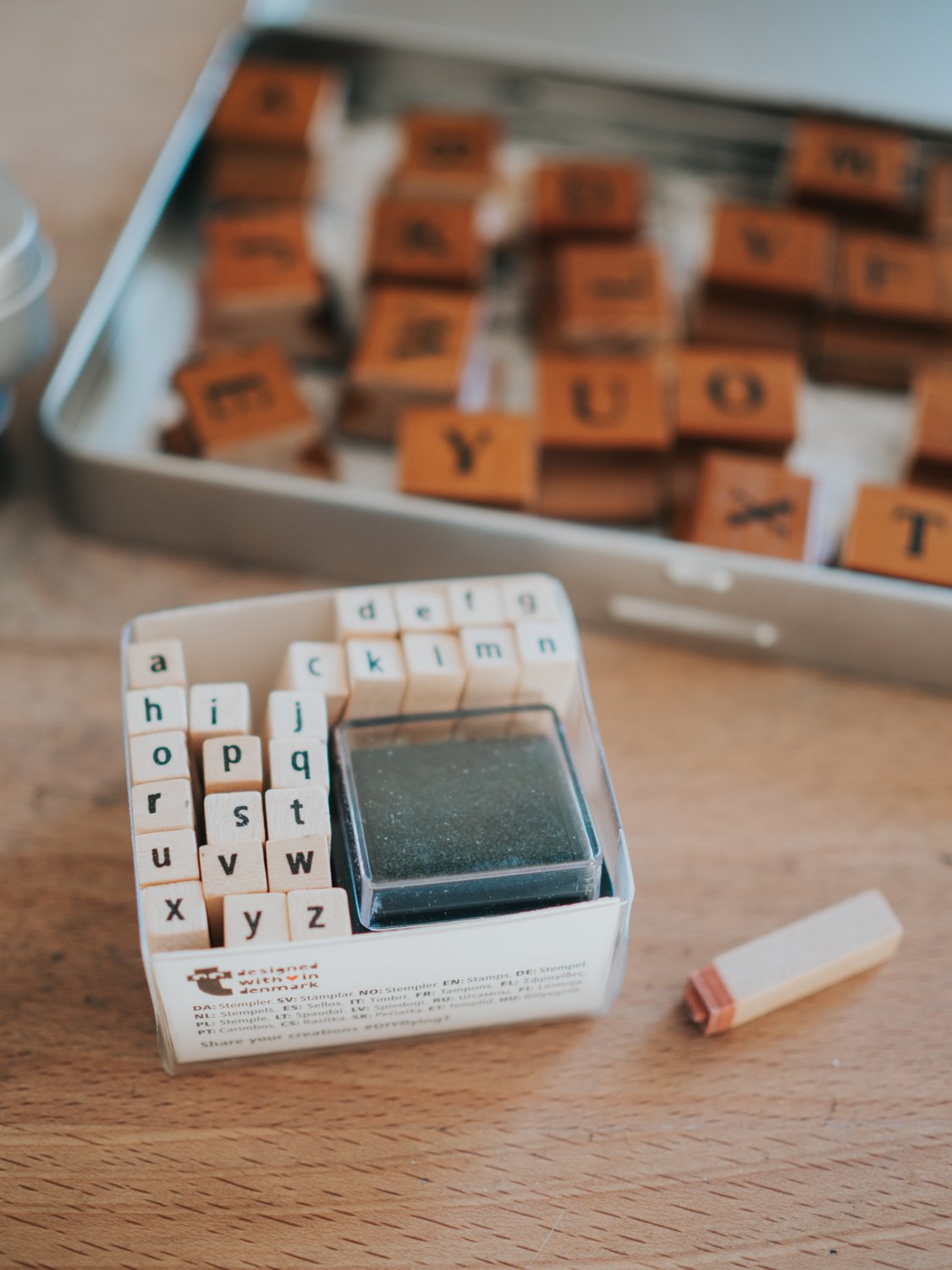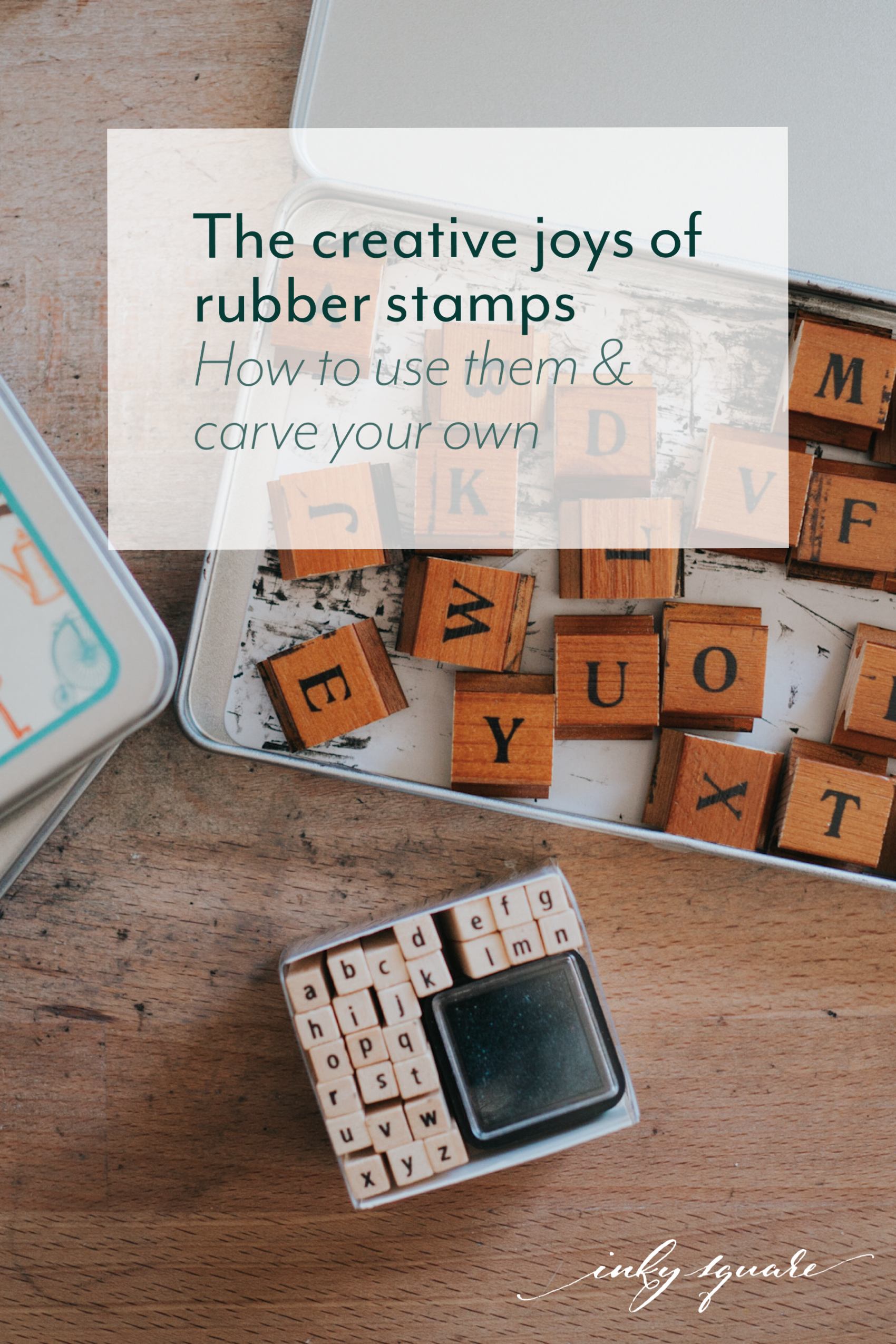The creative joys of rubber stamps
I remember trying to turn anything with relief into a stamp when I was little. Whatever was inscribed on the stoppers of aspirin tubes probably made as little sense the right way round as reversed, but there was still satisfaction to be found in transferring shapes in ink to paper, in what looked almost, if you squinted, like an ‘official’ stamp.
More recently, rubber stamps played their part in my long, tentative journey towards becoming a maker. I started collecting them, alphabets especially, and after trying my hand at linocut on a letterpress printing course I turned to carving my own. I wasn’t yet confident enough to draw my own letters, but following an outline with a carving tool slowly gave me more confidence that I might find a way to be more practically creative.
While I now mostly create my own words with a calligraphy nib or my tabletop printing press, I still use rubber stamps regularly. I had one made of my logo, to apply to my business cards alongside my typewritten contact details. I also use them to make gift tags for presents in lieu of birthday cards, and have enjoyed rubber stamping in other work too, from postmarks on envelopes for Polar Post to shop branding on labels and paper bags.
The early history of rubber stamps
Rubber stamping is a form of hand printing, akin to wood block printing, although its traditional uses make it closer in function to wax seals.
Vulcanised rubber was discovered by Charles Goodyear, of tyre fame, in 1839. The process made it possible for rubber, too unstable in its natural form, to be used as an industrial material.
There is no agreement as to who first came up with the rubber stamp, with three possible candidates, all in the US, making that claim. Whoever came first, the invention of rubber stamps dates back to the 1860s. The first rubber stamp factory, also in the US, was started in 1866 by a travelling stencil salesman called JFW Dorman.
Types and uses of rubber stamps
Date stamps: use them to date journal entries, or to label jars of preserves.
As a variation, Present & Correct make calendar and planner stamps. Or get a date stamp in a kit to create your own library.
Alphabet and number stamps: perfect to make labels for stationery, drawers or jars, or for gift tags and birthday cards.
Cavallini used to make sets you can still find second hand. Present & Correct sell alphabets in various sizes, and occasionally stock vintage sets.
Ex libris stamps: personalise your books, notebooks and journals with an ex-libris stamp, like Scriptum’s art deco version.
Pictures: you can find a stamp of pretty much anything, to make your own cards or decorate envelopes and stationery.
Words and phrases: useful words and phrases like ‘thank you’, ‘happy birthday’, ‘to’ and ‘from’ are ideal for handmade gift tags and notecards.
I have a collection of words and pictures from Cavallini, but you can find many examples in art shops or online from small businesses – including hand-carved stamps.
Shapes: to get more creative with your own prints, try more basic shapes
Present & Correct make a block shape stamp set and Princeton Architectural Press’s Stampville set has all the basic shapes you need to stamp a city.
Custom stamps
If you have a business, a stamp of your logo and/or contact details can be very handy – or you could create your own ‘thank you’ stamp with your chosen design
Mine is from the English Stamp Company.
A good complement is a stamp with moveable letters, so you can set and change a few lines of text.
Carve your own
Carving your own stamps is straightforward, especially if you keep your design simple. Either draw your own design or print it out, use a pencil to cover all the areas to carve around, then turn it round and rub the design onto a piece of soft-cut lino, rubber stamp carving block, or even a plastic eraser. Then use a carving tool around your design so it appears in relief.
Supplies including tools, as well as full kits, can easily be found in art supply shops. Fred Aldous is a good online source.
For inspiration and techniques, I recommend Stephen Fowler's Rubber Stamping.






